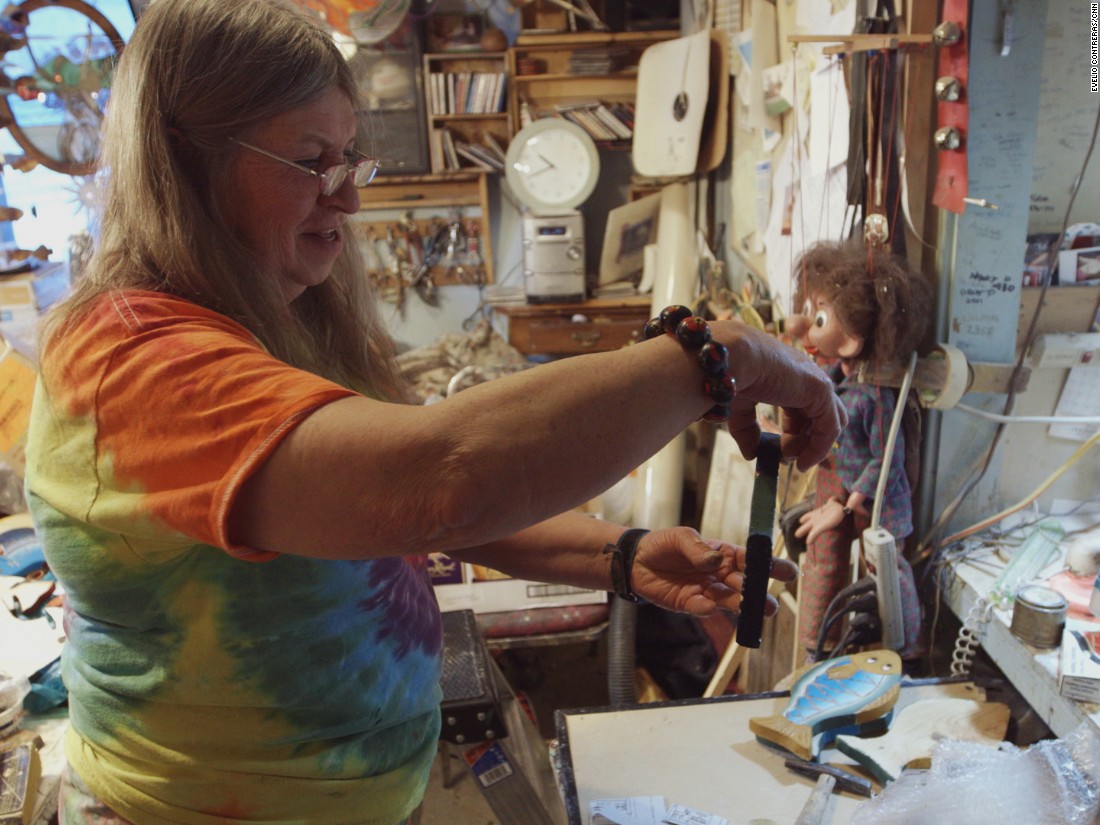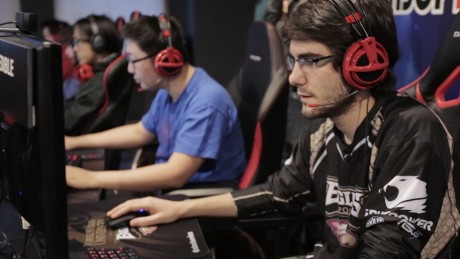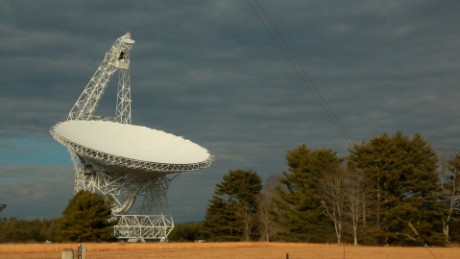Northern Enclosure Alaska's one-house town, home to hundreds
Whittier, Alaska
The only way to reach Whittier in the dead of winter used to be by boat, when the weather permitted, or by train, when the weather permitted. That was until 15 years ago, when Alaska converted a World War II rail tunnel to handle cars, too.
The drive through the single-lane tunnel can feel suffocating, but it's liberating for Whittier's residents, who arrange their lives by the tunnel's timetable -- cars can only cross once an hour in either direction, and if you're trying to get back to town after 10:30 p.m., you're out of luck.
A common sight at the entrance to Whittier is of people who missed the last crossing sleeping in their cars. Many residents own T-shirts that say "POW." Prisoner of Whittier, that is.
The thing is, Whittierites never have to take the tunnel if they don't want to, even though the tiny southwest Alaska town is severed from the outside world in so many ways. It snows 22 feet a year here, more than 1,000 times the normal national average (OK, Boston this past winter doesn't count).
About this series
Great American Stories is an occasional series on the unexpected places and unforgettable characters that help define the country.
Residents don't even have to leave the building they live in if they don't want to.
That's because Whittier, including its hospital, school and city government, functions within one self-sufficient structure: a Cold War behemoth that seems better suited to a city like Newark (no offense to Jersey).
The 14-story Begich Towers Incorporated, known around these parts simply as BTI, is probably the last thing you'd expect to see in an outpost as remote as this.
It soars skyward, rudely interrupting the surrounding National Geographic landscape of glaciers and Prince William Sound. BTI withstands six months of rain every year, followed by six months of snow and howling 80 mph winds. It was built to survive bombings, after all.
Inside, BTI feels like any massive condo complex in a big city, except that when you step outside in the winter, there are few places to go and no one to see.
Rush-hour commute in Whittier means a stop on every floor on the elevator. It means that even when it's freezing, city employees like Jennifer Rogers can go to work in sandals that show off her red-lacquered nails. She doesn't even have to take her three kids to school; they take the elevator to the basement and run down a bunker-like underground passage that connects BTI to the Whittier Community School.
Rumor has it that some folks have not stepped outside BTI for weeks, months and maybe even years.
Only about 220 people live in Whittier year-round, working in commercial fishing, recreation and tourism or for the state ferry and railroad. Most of them have homes in the tower, as though they were occupying separate bedrooms in one huge house. About their isolation together, they say: "We're all family here."
One big family. With lots of love and, some say, equal parts dysfunction. Everyone takes care of each other, but everyone also knows each other's business.
Gorillas and guns
People came to this stretch of Alaska from far-flung places to start all over. They could hole up here and never be found. But most arrived in hopes of making a better living.
Brenda Tolman, 64, was one of them. She was a sign painter in sunny California when she scooped up her twin boys and set up house in Whittier.
"I was terrified when I first came out of that tunnel," she says of her big move in 1982. "I thought there would be a big gorilla standing here. The town looks like it should be in a horror movie."
In fact, Hollywood was planning to shoot "Hunter-Killer" in Whittier this spring. It's a submarine thriller in which Whittier would stand in for a Russian naval base. Ironic, since the city was born as a U.S. military base after Pearl Harbor and played a key role in the early days of the Cold War.
The military built two monoliths -- BTI and the nearby Buckner Building -- but shuttered the base in the late 1950s after defense cuts and the invention of intercontinental ballistic missiles made it obsolete.
Several years later, Whittier incorporated as a city, and the tower, named to honor late Alaska Rep. Nick Begich, was deeded over in 1973.
The asbestos-laden Buckner Building met with a grimmer fate. No one has ever coughed up the millions it would take to detoxify and renovate, and these days it sits inescapable from view like an ugly beast tamed by the elements.
Whittier residents don't mind the eyesore. It's a part of their history, they say.
"We're used to looking at it. Doesn't bother us," Tolman says. "In fact, very little bothers us."
All this makes life peculiar here, so much so that a book about Whittier published 15 years ago was titled, "The Strangest Town in Alaska."
Whittierites know well that the circumstances of their lives are shaped by Mother Nature and physical boundaries. The defined space has, inevitably, defined the town's people, although ultimately, the concerns here are no different than in the rest of America: community, employment, education, health.
It's just that everything about people and life gets wildly magnified here. And it can all get a bit weird.
A rebel and her reindeer
Sometimes, when the tundra winds stack the snow high, it's impossible to open the front doors at Begich Towers. But Tolman still goes out twice a day to a pen across the street where she keeps two reindeer.
One time, the snow banks rose taller than the 15-foot fence and her pets meandered off, sending Tolman chasing after them. She thinks one reason people like living in BTI is because they never have to worry about shoveling snow. The city does it for them.
"It's all taken care of. And that's a big deal around here."
Tolman's known as the matriarch of the building -- not just because she's been here so long, but because she likes to keep everyone in line. She tells it like it is. A bit of a rebel, she supposes.

Brenda Tolman is one of the few residents who live outside the tower, though she still keeps her studio there.
Tolman walks down a narrow, cinder block and linoleum hallway and jokes about how BTI can feel like a mental institution. She keeps to her artist's studio in the mornings because that's where she also hangs her shingle as Whittier's notary public. She gets busy painting carved wooden halibuts and takes a heavy drag of her Tareyton Menthol before explaining how she moved to Alaska for the fresh air and the job opportunities.
Back then, oil barons occupied Begich Towers and Tolman made a pretty penny lettering their fancy boats.
But when the price of oil plummeted in the late 1980s, Whittier's makeup changed and a whole new crowd of people moved in. More recently, waves of people from American Samoa, Guam, the Philippines and Hawaii have settled here.
Tolman used to live on the seventh floor but couldn't stand what she calls BTI's "forced socialization." Just because you can walk the halls in your pj's doesn't mean you can visit people at any hour, she says. But that's what happens.
She needed privacy and wanted to make herself get outside more, so she eventually moved to a small apartment complex down the road. It's the only other place to live in Whittier.
Maybe, she surmises, that's the reason the mayor also chose not to live in the tower.
"At BTI, anyone can cruise over in their socks and give him their opinion," she says. "But if you've got to get dressed and go out and get in the car and then drive over, well, maybe that's a little too much."
Blurred lines
At lunchtime, students run out the doors of the Whittier school and down the subterranean walkway that spills out into BTI's cavernous basement. They walk past a maze of storage cages and a room full of freezers that rent for $15 a month. They're packed with steaks and other meats as well as ice cream, loaves of bread, frozen dinners and anything else that will keep. That's how people survive on days when it seems they may never feel the sun's warmth again.
A hush falls over the small school after the students are gone.
Erika Thompson takes out her lunch from the refrigerator. It's a homemade salad packed neatly in a plastic container inside a pink insulated lunch bag. A mini container holds a vinaigrette dressing.
Thompson, 38, could just as easily go home to her ninth floor condo. She chooses not to.
"I like to create a separation from work and home."
Often, she says, the boundaries become too blurred.
Thompson uses the rest of her lunch break to run a few errands. She's leaving for a vacation in Mexico the next day.
"Hi, Ms. T," says one of her students as Thompson gets into the elevator.
In Whittier, there's no getting away from her students. "I take the garbage out, I see my students. I do my laundry, I see my students," she says.
During the holidays, a student knocked on the door of her condo. When she opened it, he said: "I just wanted to make sure you were in the Christmas spirit. Make sure you bring it to school."
Before that, at Thanksgiving, she needed to bake sweet potatoes in her oven. So she held her reading class in her living room.
"Here the student-teacher relationship is very different," she says, "because you live among your students."
Thompson pops over to Kozy Korner, a small convenience store on the first floor operated by Frankie and Ron Graham. She wants to make sure her apartment is stocked with teenager food.
"I'm buying junk food for my dog sitter," she announces as she picks up packages of instant ramen noodles and frozen burritos -- and a Fresca for herself. She thinks about a bag of chips.
"Wow. $9. Now you know why I go to Anchorage."
Kozy Korner's stock depends on what the Grahams pick up on their shopping trips to Anchorage, some 60 miles north. Besides pasta, tomato sauce and cans of Dinty Moore stews, there's one can of Pledge furniture polish, a box of Special K cereal, two bottles of Cutex nail polish remover, one gallon of black walnut ice cream and five cartons of tempura batter.
Frankie Graham says the store adds greatly to the building's self-sufficiency. She recalls a time after an avalanche when food and supplies had to be airlifted to other towns. But not here.
"The only thing we needed here was baby food."
Thompson pays a hefty sum for her junk food and returns to school. She shows off an indoor hydroponic garden she started so the kids would appreciate fruits and vegetables more. The school acquired the equipment after the police busted a guy who was using it to grow pot in his BTI condo.
Next to the garden is an indoor playground; Thompson, a former fitness coach, is big on physical activity.
Many of the BTI kids hang out in the building's lobby during lunch, even though that's against the rules. It's a big bone of contention in the building: how much freedom to give to the kids, especially in the wintertime when everyone is trapped inside. Some of the older folks would like BTI to function more as an adult facility, maybe even a retirement home.
But others believe that if the children go away, so will the energy in the building.
The kids vanish from the lobby when they hear a building staffer walking their way.
"It's amazing how they all scatter when they see me," the staffer says, straightening up chairs and picking up candy wrappers. "They know they're not supposed to gather here. They don't take care of it."
'God's little acre'
Tolman says there really is no other place on Earth she'd rather live.
Whittier is beautiful and safe. "God's little acre," she calls it.
In recent months, she's taken a fancy to the Samoan community at BTI and started attending their church service, one of two held every Sunday in the basement, near the storage cages.
Tolman goes not necessarily to get God, but to listen to the music. It lifts her up and puts joy in her heart, like a burst of summer in the middle of winter's bleakness.
Without diversion, Whittier has the potential to drown a person in claustrophobia. "You gotta be good with being by yourself," Tolman says. "Or it can get lonely."
That's perhaps the irony of living here, in an out-of-place tower of a city on the west bank of Prince William Sound. You have to learn to live with others at close quarters, but ultimately you've got to love yourself.


